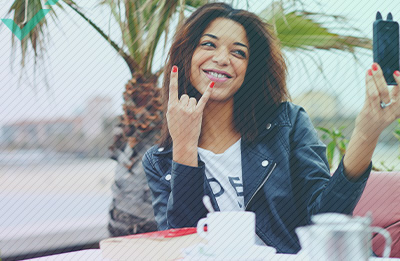Have you heard of native advertising? Simply put, it’s a marketing style that doesn’t feel like advertising. Native advertisements are often deftly disguised in social media posts or as recommended content like sponsored articles. They’re considered “non-disruptive” because they don’t look like ads, so they don’t take anything away from the overall user experience (unlike a huge, distracting banner ad in the middle of an article you’re reading).
Although notably not as eye-catching, the use of native advertising has grown considerably over the last couple of years. According to data from the Interactive Advertising Bureau, it’s expected that by 2021, native advertising will account for 36% of total ad revenue for news media and magazine publishers.
NATIVE ADVERTISING TRENDS
If there’s one thing most people can agree on, it’s that they don’t want to be bombarded by internet ads. As a matter of fact, in the United States alone, roughly 26% of internet users employ ad blockers. In Europe, these numbers are as high as 34%. This is equivalent to hundreds of millions of people who don’t want to see ads.
As such, we are seeing a vested effort in the development of creative and seamless native advertising solutions. In digital media markets, ad strategists are trying to find ways to make their advertisements blend more and be more attractive to potential clients.
Sometimes, native advertisements are so discreet that people don’t even know they’re looking at them. Nearly 11% of publishers don’t even label their native advertisements, which experts say is harmful to the industry as it creates an atmosphere of mistrust. Author Jesper Larsen, founder of the Native Advertising Institute, says, “Lack of labelling hurts the credibility of news media and needs to be addressed”.
10 SUCCESSFUL NATIVE ADVERTISING EXAMPLES
Despite some controversy, there have been some undeniably successful examples of native advertising in recent years. Let’s take a look at the top 10.
NEW YORK TIMES: T BRAND STUDIO
The New York Times’ “T Brand Studio” cleverly combines native advertising with high-quality content. This facet of the NYT takes a futuristic, and often fun, approach to brand integration, using virtual reality and other trending tech to make for an interactive and unobtrusive user experience. Because the content is actually well-researched and well-presented, it doesn’t feel like a sales pitch. The studio has produced a lot of successful work, including a 2017 Spotify campaign that sought to verify the accuracy of claims made in the year’s top songs.
NEW YORK LOTTERY: JACKPOT DRUMROLL
To increase interest in their 2016 Powerball jackpot, NY Lottery hired over 200 drummers to stand outside of bodegas and convenience stores for 12 straight hours—a stunt that led to nationwide news coverage, $4.5 million in additional revenue, and a Webby Award nomination. This was advertising nicely packaged as entertainment and theatrics.
CEDAR POINT: CATCH-A-GHOST
This Ohio theme park took Halloween marketing to a whole new level by inviting their social media followers to catch a screenshot of a ghost that quickly appeared and disappeared onscreen. This game increased their Snap Story engagement by 233% and drew in 144k unique users. It also encouraged repeat visits as the task was typically not accomplished on the first try. Having people engage with your marketing campaign willingly is among the most natural forms of advertising that exists.
CHERNOBYL ON HBO: NEW YORKER EDUCATIONAL PROFILE
To spread the word about its then-upcoming miniseries, Chernobyl, HBO joined forces with The New Yorker to compile an educational profile on the events that led to the power plant disaster in the 1980s. This offered viewers so much more than a commercial telling them a new show would be airing; it provided them with valuable knowledge about an important point in global history.
TACO BELL: SNAPCHAT GEOFILTER PROGRAM
Taco Bell’s Cinco de Mayo promotion was one of the first examples of Snapchat’s geofilter program. Their special lens was a sizable investment—nearly $750k—but it garnered over 224 million views in just the first day. Using social media to create games and activities is a great way to advertise without really advertising.
NETFLIX: COCAINENOMICS BY THE WALL STREET JOURNAL
Netflix collaborated with The Wall Street Journal to launch an interactive portal that included maps, timelines, articles, and quizzes to show users the history of the international drug trade with a backdrop setting of Medellin, Colombia. This was a valuable advertising tool for the show Narcos, as well as a fun educational activity for viewers.
DENNY’S: TWITTER AND THE MILLENNIAL AUDIENCE
Denny’s is a well-known Twitter pioneer. They use this unique social media platform to reach a millennial demographic that would normally forgo a casual dining chain for something trendy. Their posts include regular questions and funny comments to engage users with their brand without actually posting an advertisement.
IKEA: QUIZ THROUGH THE TELEGRAPH
Ikea frequently uses native advertisements that don’t necessarily market a specific product, but instead build overall brand awareness. For example, they found success with a goofy, A–Z quiz they launched in The Telegraph that offered readers various tips and tricks for getting a better night’s sleep.
AIRBNB: NYT HISTORY OF ELLIS ISLAND
Airbnb partnered with The New York Times to focus on hospitality and home development by exploring the story of Ellis Island through the use of family histories and interviews, maps, and photos. History and education-based campaigns are very popular forms of native advertising as they provide an experience alongside knowledge that lasts a lifetime.
YOUTUBE: AWESOME STUFF WEEK
When YouTube expanded their e-commerce add-ons, they looked to one of their top users to help drum up interest in the new integrations. iJustine and Lewis Hilsenteger coined “Awesome Stuff Week”, a celebration of unboxings and makeup demos that showed viewers they could now buy stuff directly within YouTube videos.
FINAL THOUGHTS
Although some people may find native ads too subtle, they’re becoming increasingly popular. When used correctly, they can generate substantial interest, brand awareness, and revenue.
You’ll need to be creative and have some knowledge about your audience, but with a seasoned strategist, you too can create a discreet native ad campaign that works for your company.


